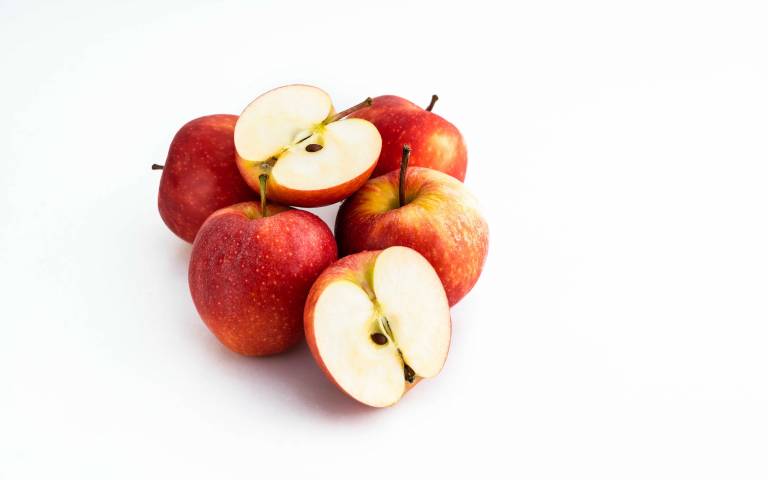Using theory, numerical simulations and lab experiments, a team led by UCL and Harvard researchers have shown for the first time how apples get their distinct shape.

Apples are among the oldest and most recognisable fruits in the world. Humans have been drawing apples for millennia - their likeness has been captured by everyone from Caravaggio to Picasso.
The new study, published in Nature Physics, looked at the apple's shape, in particular the dimple or cusp at the top, where the stem grows. It described the shape using singularity theory, a long-standing mathematical theory used to understand phenomena where some property is infinite, ranging from black holes to cracks in the ground to pieces of string.
The researchers demonstrated that the apple cusp - the curve going down towards the stem, and then sloping back up on the other side - was a singularity, exhibiting the same 2D shape as a droplet of water as it breaks from a column, a pattern of light in a swimming pool, or water in a bath as it drains down a plug hole.
Co-lead author Dr Thomas Michaels (UCL Physics & Astronomy) said: "What is exciting about singularities is that they are universal. The apple cusp has nothing in common with light patterns in a swimming pool, or a droplet breaking off from a column of water, yet it makes the same shape as they do.
"The concept of universality goes very deep and can be very useful because it connects singular phenomena observed in very different physical systems."
The research team began by collecting apples at various growth stages from an orchard at Peterhouse College at University of Cambridge (the alma mater of another famous apple lover, Sir Isaac Newton). They cut the apples in half and tracked the growth of the dimple, or cusp as they called it, over time.






